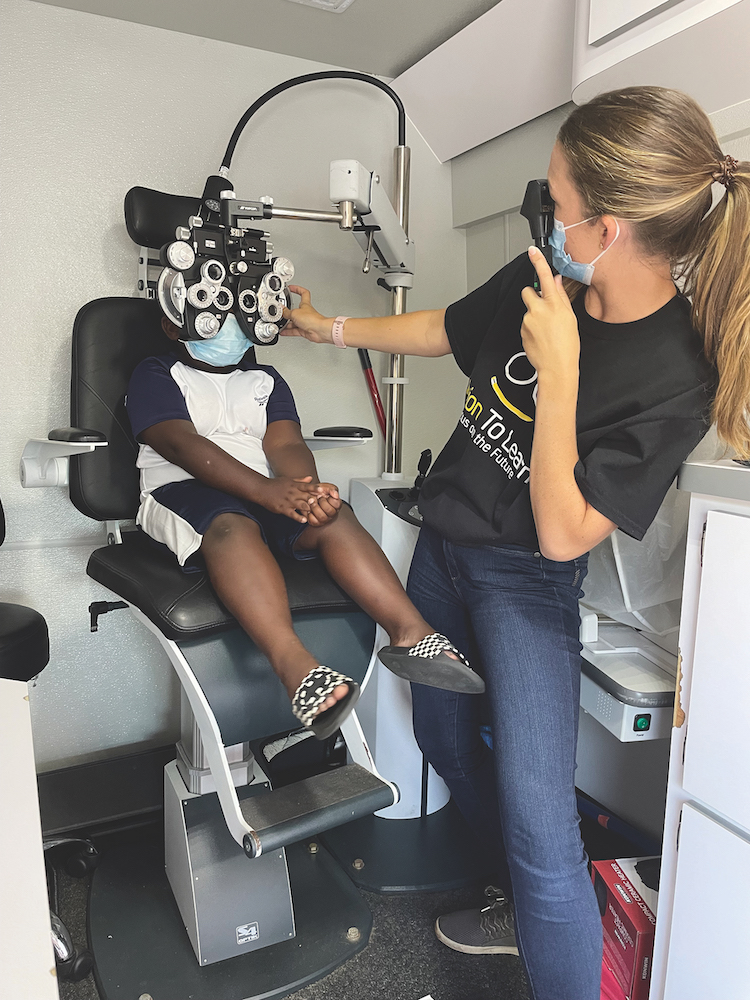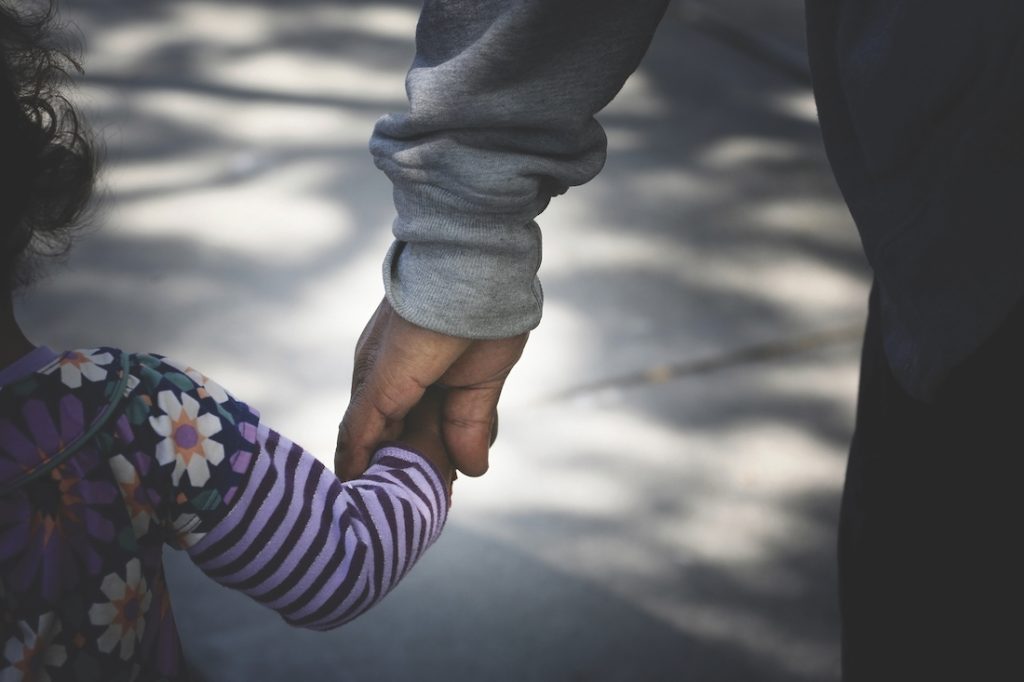Filling in Gaps When Resources Are Dwindling

At the start of the 2023 school year, San Francisco public schools received $1.28 billion to spend on 48,000 students – that’s nearly $27,000 per child. But in the coming years, that number is expected to decline dramatically.
The city gives out funds based on school attendance, and numbers are expected to go down. That’s due to a number of factors, including people deciding to pull their kids from public schools and moving out of the Bay Area entirely.
With the needs of students having only increased in the wake of the pandemic, educators and parents fear that the funding will be barely enough to pay the bills – let alone enrich the lives of the children attending schools or for those who need extra help in the Bay Area.
For child welfare activists, there’s concern that less funding will only widen the city’s already extreme wealth gap.
“I’ve never seen the city this horrible,” said Queen Adu-Poku, who is a San Francisco native and Licensed Clinical Social Worker and CEO of Royal Emotional Care.
“I grew up on the American dream of going to school with all ethnicities, all races, and we got along. I went to public school throughout. Now there’s this issue of education availability and how that is playing out for people of color in a city. There’s the fact that there is a mass exodus of human people. They basically are priced out.”
For years, Bay Area advocates have known an uncomfortable truth: the money the city and state spent on childhood education, enrichment, and support just wasn’t enough.
While the already limited funding goes towards teaching children in largely traditional educational settings, it often can’t fill the need for or wade into the reality that many children and families face: limited resources at the public schools they attend, crippling poverty at home, or unstable or even abusive family situations.
Nearly a fifth of residents in San Francisco county are under 18 years old, according to Census data. And child poverty hovers around 20 percent.

County, state, and federal funds that go towards child-focused services, in education and other sectors, often have blind spots when it comes to filling non-traditional, but yet equally important, needs that children and youths face in the Bay Area’s racially and socio-economically diverse neighborhoods.
Adu-Poku said that’s most apparent in the healthcare and child welfare sectors, where she works. The bureaucracy can be as equally daunting for those who are looking for resources as it is for those who work within the agencies.
Philanthropy, however, can be more nimble. Nonprofit organizations funded by individual donations and family grants don’t have to wait for annual education budgets to be approved in order to move resources to programs that kids urgently need. And volunteers and staff don’t operate in the same heavily administrative systems typical of governmental agencies or government-led programs – they can cut through the red tape to get funding directly to kids.
“Our volunteers know how to navigate it, but we have the benefit of not being part of the same bureaucratic system. We are more removed from the bureaucracy that can sometimes get in the way,” said Nkia Richardson, executive director of CASA of San Mateo County, a group that provides otherwise unavailable youth advocates for children going through the foster system.
CASA (Court Appointed Special Advocates) is a nonprofit organization that trains volunteers to advocate for young people in the foster care and juvenile justice systems. It began in Seattle, where a judge realized that children, not just their family members, needed specific advocates to help them through the sometimes traumatic experience of going through the court system. Its success is due in large part to trained volunteers who advocate for children and youths from birth to age 21 in the courtroom and also serve as mentors, spending time with their CASA mentee each week to provide fun activities and emotional support for a minimum of 18 months.
“Our reason to exist is to encourage the village to acknowledge the responsibility of the community. Every child is all of our responsibility,” said Richardson of the program’s driving motto.
In the late ‘90s, researchers were taking note of the soaring impact of nonprofits on social work across the country. They found widespread growth in the nonprofit sector in the field of social services across 285 major metropolitan areas in the United States largely because of increased social cohesion, higher diversity, needs for more resources, and a market failure.
The healthcare system is one clear example of a market failure due to its inefficient distribution of services to kids in need. It’s too often that the real needs of a community are not clear to the naked eye. The nonprofit Vision to Learn in San Francisco has found that to be especially so with children who are visually impaired but don’t necessarily know how to ask for glasses.

While the government, through Medicaid, has covered pediatric vision since 1966, kids are still unable to obtain the glasses they need at an alarming rate because there is not equitable access to optometrists and vision prescriptions in underserved communities.
According to the American Optometric Association, one in four children has vision problems. Vision to Learn is embedded in local communities and schools in the Bay Area, and therefore is able to make sure children directly receive the resources they need in order to succeed at school.
It sounds simple, but giving kids glasses is the equivalent of two to four months of additional learning time, according to a study conducted by Johns Hopkins’ Wilmer Eye Institute. According to the study, giving kids glasses is one of the most effective interventions known to raise academic performance.
And what happens after a child gets their first pair of free reading glasses?
“I think the thing that we most often hear is that kids say they didn’t know that trees had leaves,” said Hollister. “We had a little guy just a few weeks ago. I thought he was brilliant. He was a first grader and he said he didn’t know rice had grains until he got his glasses.”

But communities need partnerships to thrive – the same goes for the working relationship between the government systems and the nonprofits who serve the same populations. There has to be a symbiosis to achieve successful outcomes, studies show. While nonprofits largely exist to offer alternative options for families or options that didn’t exist at all, they can only succeed at fulfilling their mission if the community trusts them and utilizes them.
Research shows that nonprofits are more fully trusted by the public when they also trust government services in that area. Whether residents actually seek out nonprofits depends on a number of factors. An American University study found that the more positively they viewed their government services, the more likely they were to seek out and use nonprofit services too. The data shows that nonprofits and the local government actually rely on one another, rather than working to supplement each other.
A 2006 study published in the Public Administration Review additionally found that it’s not just cohesion and cross-collaboration between the government and nonprofit sectors that are needed to make both sets of programs truly helpful to the populations they serve, but across multiple sectors.
“People who want to tackle tough social problems and achieve beneficial community outcomes are beginning to understand that multiple sectors of a democratic society – business, nonprofits and philanthropies, the media, the community, and government – must collaborate to deal effectively and humanely with the challenges,” it read.
Adu-Poku sees checks and balances as largely positive for both government and nonprofit services. It keeps all programs and workers aligned, it makes sure the money is used appropriately and fairly, and that everyone weighs in on where it should go.
But it can also cause frustration. In social work, she said it has recently led to what she describes as “The Great Shortage” in the number of people actively applying to be child welfare advocates in the city. She herself served as a Child Protective Services worker for 20 years.
Government services, like the foster care system, can be rather black and white. For example, the government program’s focus on the safety and well-being of children. But studies have shown that kids who are taken away from their homes and family members experience detrimental psychological impacts that span into their adult years.
Wayfinder Family Services, a nonprofit based in the Bay Area, works to help family members maintain parental guardianship of children, despite or in spite of any financial strains.

Here’s a likely little known fact: There are more than 600,000 grandparents in California who are raising their grandchildren, more than anywhere else in the country.
The nonprofit’s nationally recognized Kinship Support Services Program specializes in supporting grandparents, extended family members, or close family friends who step up to raise children when their birth parents are unable to. It exists because the state on its own does not offer funds to cover children’s basic needs to family caregivers.
A very essential cross-sector to the success of a social program is also community. And communities are built in classrooms, through volunteer work, and on the playground.
In the years directly after the COVID-19 pandemic – where kids spent hours learning and playing in front of computer screens and consoles – integrating interactive play back into children’s lives is especially important. Studies have found that play is crucial for a child’s emotional, social, and even educational health. Children learn just as much through play as they do through work.
“The presence or absence of play, particularly in child development, has a great deal to do with competency, resiliency, emotional health, [and] brain size,” psychiatrist Dr. Stuart Brown told the Hechinger Report.
Brown, who is the founder and past president of the National Institute for Play, said that play is “not frivolous and not just for kids, but something that is an inherent part of human nature.”
Such is the emphasis for San Francisco Youth Soccer, a nonprofit based in San Francisco that focuses on providing equitable access to the sport through coaching, training, and open fields.
For Scotty Kober, executive director of the organization, opportunities for children after school are just as tantamount to their personal growth as those inside the classroom. She says soccer was a personal savior for her growing up, and helped her come out of her very nervous shell.
“I was incredibly shy. I was incredibly introverted. And yet on the field, I was a leader,” said Kober. “I found my voice. I found that I could be a leader with my voice. I could be a leader with my body on the pitch. And that was a mental health savior for me.”
Soccer is the most popular sport in the world and especially a favorite among the hispanic and Latino students in the San Francisco Unified School District, which is roughly 29% of the student body, the second largest racial group of students in the system.
But the public and charter schools children in San Francisco attend often lack adequate fields to play on, or any outdoor space at all. SFYS stepped in to try to find a workaround to make sure kids could still access the sport, even if their local community centers or schools didn’t have the resources.
Kober says what her organization does is offer two bridges – one between work and play, and another between what the local school system offers kids for sports and what she knows the community can come together to offer them.
“We are filling gaps,” she said. “If you have an excellent coach, that’s wonderful. If you have parents who are all-in, that’s the dream. But you’re still an individual that has to make your own way in the world, and if sports is how you find yourself and if sports is where you get your mental health, if that’s how you get your movement, if it’s how you find your voice, and it’s how you feel your camaraderie or get out of a home environment that’s dodgy, then we want to support you there too.”
